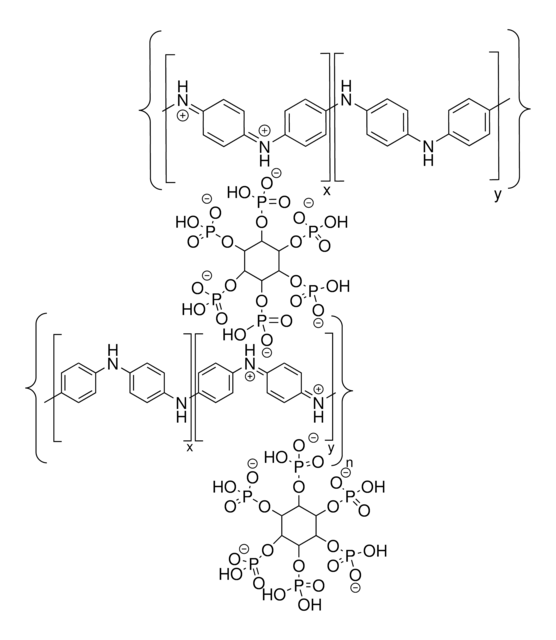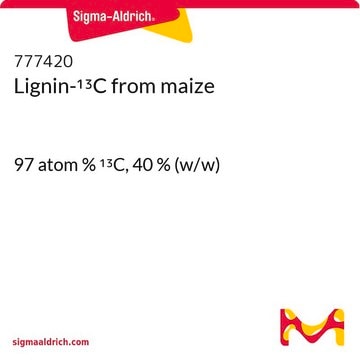561126
Polyaniline (emeraldine salt) short chain, grafted to lignin
powder
Scegli un formato
About This Item
Prodotti consigliati
Stato
powder
contiene
ligno-sulfonic acid as dopant
Dimensione particelle
2-3 μm
pH
1.95 (5 wt. % in H2O)
Conducibilità
1-2 S/cm (pressed pellet)
Stringa SMILE
Nc1ccc(N)cc1
InChI
1S/C6H8N2/c7-5-1-2-6(8)4-3-5/h1-4H,7-8H2
CBCKQZAAMUWICA-UHFFFAOYSA-N
Cerchi prodotti simili? Visita Guida al confronto tra prodotti
Categorie correlate
Descrizione generale
Applicazioni
Caratteristiche e vantaggi
Resistenza chim/fis
Altre note
Avvertenze
Danger
Indicazioni di pericolo
Consigli di prudenza
Classi di pericolo
Eye Dam. 1 - Skin Irrit. 2 - STOT SE 3
Organi bersaglio
Respiratory system
Codice della classe di stoccaggio
11 - Combustible Solids
Classe di pericolosità dell'acqua (WGK)
WGK 3
Punto d’infiammabilità (°F)
Not applicable
Punto d’infiammabilità (°C)
Not applicable
Dispositivi di protezione individuale
dust mask type N95 (US), Eyeshields, Gloves
Scegli una delle versioni più recenti:
Certificati d'analisi (COA)
Non trovi la versione di tuo interesse?
Se hai bisogno di una versione specifica, puoi cercare il certificato tramite il numero di lotto.
Possiedi già questo prodotto?
I documenti relativi ai prodotti acquistati recentemente sono disponibili nell’Archivio dei documenti.
I clienti hanno visto anche
Articoli
Sigma-Aldrich tutorial on lithography nanopatterning explains patterning layers for conductors, semiconductors, and dielectrics on surfaces.
The application of conducting polymers at the interface with biology is an exciting new trend in organic electronics research.
Self-healing soft electronic materials offer potential cost savings and reduced electronic waste.
While dye sensitization as the basis for color photography has been accepted for a very long time,1 attempts to use this principle for the conversion of solar light to electricity generally had resulted only in very low photocurrents, below 100 nA/cm
Active Filters
Il team dei nostri ricercatori vanta grande esperienza in tutte le aree della ricerca quali Life Science, scienza dei materiali, sintesi chimica, cromatografia, discipline analitiche, ecc..
Contatta l'Assistenza Tecnica.







